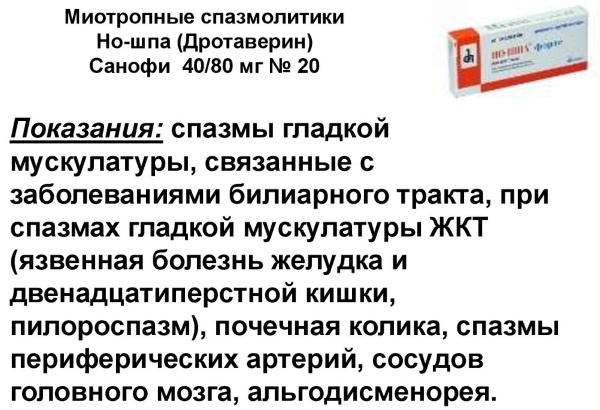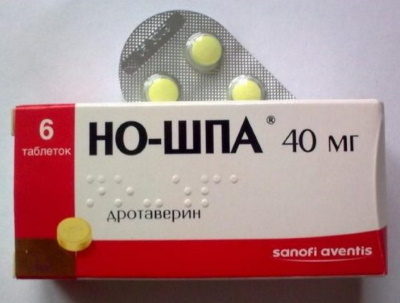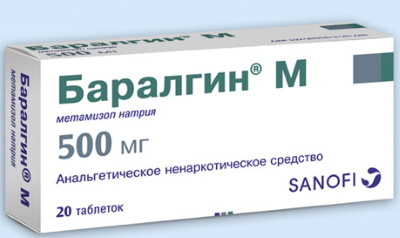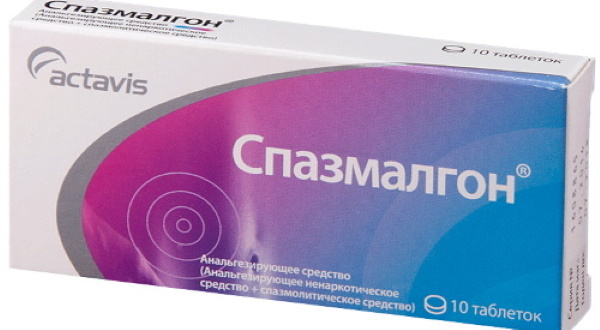Content
- What drugs belong to antispasmodics
- Release form
- Indications for the use of antispasmodics for abdominal pain in an adult
- What medications can I use?
- How to choose the right medicine?
- Method of using drugs
- No-shpa
- Papaverine
- Baralgin
- Datiscan
- Spazmalgon
- Video about antispasmodics for abdominal pain
Antispasmodics are a group of drugs that are often used for damage to internal organs of varying severity. The list of remedies includes medicines in various forms, which are used for abdominal pain, cramps and other disorders. Depending on the cause of the pathology and accompanying symptoms, the specialist determines the drug for each patient individually.
What drugs belong to antispasmodics
Antispasmodics are medicines whose action is aimed at eliminating spasm of the smooth muscles of the muscles of the internal organs. They may have different components in their composition, differ somewhat in the mechanism of influence on muscle fibers, but the therapeutic effect differs slightly. Experts refer to this group as myotropic antispasmodics and M-anticholinergics. The principle of their operation is somewhat different.
Myotropic agents relax smooth muscle fibers, prevent the re-development of severe spasm. They are considered effective and are used frequently. Such funds include No-shpa, Papaverine and analogues of these medicines. M-anticholinergics with antispasmodic properties are considered as effective and safer.

They enter the systemic circulation in smaller quantities, do not penetrate the blood-brain barrier, which somewhat reduces the likelihood of complications. Despite these benefits, myotropic antispasmodics are used much more frequently.
Combined medicines are also produced, which have not only antispasmodic, but also anesthetic, mild antipyretic effect. They are indicated for severe symptoms and the presence of concomitant complications in the patient.
Release form
Antispasmodics (the list of drugs for abdominal pain includes drugs with different components) are used only when indicated. The specific dosage form is determined by the doctor. On the pharmacy shelves, you can find medicines in different forms, so if necessary, each patient can use the most suitable option for themselves.
| Dosage form | Peculiarities |
| Pills | The tablet dosage form is popular among patients due to its simplicity application, the rapid onset of the therapeutic effect, as well as the possibility of using products at home conditions. Despite its high efficiency, medicines can be dangerous if used independently without a doctor's prescription. In acute pain and some other disorders, the action of the drug does not occur quickly enough, therefore, parenteral drugs are usually used. |
| Capsules | Capsules work in the same way as tablets, but the capsule shell may dissolve slightly faster. Some patients prefer capsules, but experts note that they are not more effective. |
| Solutions for parenteral administration | Solutions for intramuscular and intravenous administration are often used for acute pain. This is due to the rapid onset of the therapeutic effect after administration. Means help get rid of pronounced manifestations, prevents their reappearance for a short period of time. |
| Suppositories | Suppositories for rectal administration are used in the case when the patient, for whatever reason, cannot use tablets, capsules, and also cannot enter the solution. This dosage form is characterized by a fast action, since the active substances are absorbed through the walls of the rectum over a short period of time. |

Depending on the severity of the course of the disorder, a specific dosage form is determined, but the patient is not recommended to take medications on his own.
Indications for the use of antispasmodics for abdominal pain in an adult
Antispasmodics for abdominal pain are prescribed after a preliminary examination and identification of the cause of the disorder.
The list of drugs includes different means, but most of them have general indications for prescribing:
- Constipation against the background of spasms of smooth muscles in different parts of the intestine. With such a violation, the funds are used as an auxiliary method of treatment to increase its effectiveness.
- Pathologies of the gallbladder, accompanied by frequent bouts of colic. Such deviations can be observed in patients who suffer from chronic cholecystitis with the formation of stones in the gallbladder.
- The defeat of the bile ducts, provoking a violation of the discharge of bile and its stagnation. Antispasmodics relieve the condition and prevent the development of complications.
- Chronic liver pathologies, in which there is a deterioration in the functioning of the entire digestive tract.
- Diseases of the pancreas in a chronic form. The medicine is included in the course of the main treatment in combination with pain relievers and other medications.
- Bowel disease in acute form. For example, with colitis and enteritis, patients often experience spasms. Taking funds helps to alleviate the course of the disease.
- Cramping pains in the stomach. Usually, drugs are not used, but for spasms, accompanied by nausea and bouts of vomiting, they can alleviate the course of the disorder.
- Chronic gastric ulcer and duodenal ulcer. Medicines are used for exacerbation, but in the absence of signs of perforation of the organ wall. Use when such symptoms appear only complicates the course of the disease.
- Abdominal pain after removal of the gallbladder. Drugs with pronounced properties are combined with drugs from other groups.
- Discomfort in patients who have undergone surgery on other parts of the digestive system.

Antispasmodic medications can be prescribed in case of damage to the reproductive system in women, painful menstruation. Such disorders are often accompanied by pain in the abdominal region. Antispasmodics (the list of drugs for abdominal pain includes drugs with different ingredients in the composition) are not used according to the standard scheme, which is associated with the need for an individual approach to each sick.
Self-administration at a standard dosage does not always bring a therapeutic effect.
Usually, a specialist, during examination and questioning, identifies the cause of the violation, the degree of its neglect, and then determines the specific scheme for the patient. In most cases, taking antispasmodics is recommended for a short period of time. They start it with the minimum effective dosage, if necessary, increase it according to individual indications.
Antispasmodics are indicated when certain symptoms appear. The funds are not used for prophylaxis or to prevent violations, since they do not have a cumulative effect.
What medications can I use?
When choosing a medicine, the doctor takes into account the specific disease, the severity of its symptoms. There are no universal medicines that would suit all patients and would not provoke negative reactions. In case of pathologies of the digestive system and the occurrence of pain in the abdomen, it is recommended to use myotropic antispasmodics, the action of which is aimed specifically at relaxing smooth muscles internal organs.
They are considered effective, despite a larger list of contraindications than those from another group. In most cases, Drotaverin and drugs based on this active ingredient are used, for example, No-shpu. With severe pain, Spazmalgon, Baralgin are shown. Often, medicines are combined with other drugs to increase the effectiveness of treatment.

At home, it is better to give preference to tablets or medicines in the form of capsules. In a hospital setting, solutions are often prescribed, which is associated with the rapid onset of the effect and the minimal risk of complications from the mucous membranes of the stomach and intestines.
How to choose the right medicine?
When choosing a medication, the doctor should take into account the root cause of the symptom, the degree of neglect of the disease and the presence of concomitant deviations from other organs in the patient.
It is also important to exclude contraindications for taking antispasmodics:
- Closed-angle glaucoma. In this case, the course of an ophthalmic disease is aggravated.
- Intolerance to the ingredients in the composition of the medication.
- The appearance of signs of perforation of the wall of the stomach or intestines. For example, with a peptic ulcer, such complications can occur, but taking funds does not help alleviate the condition, leading to an aggravation of symptoms.
- A critical decrease in blood pressure indicators, a state of shock against the background of pain syndrome, trauma or pathologies of internal organs.
- Internal bleeding against the background of damage to the organs of the digestive system. Taking antispasmodics significantly worsens the condition.
- Pregnancy and lactation period. Some funds in this group are allowed to be prescribed to pregnant and lactating women, but the decision is made only by the doctor after examination.
- Diagnosis of prostate adenoma. In some cases, medications aggravate the patient's condition.
- Severe blood diseases, accompanied by a violation of the production of the most important cells.
Each drug may have individual contraindications, which are important to consider before prescribing. When choosing, the doctor takes into account the individual reaction of the body to a specific drug, as well as possible complications during therapy, the cause of the disorder and the degree of pain.
Method of using drugs
Antispasmodics (the list of drugs for abdominal pain includes many drugs with varying degrees of effectiveness) are used in different schemes, depending on the specific drug.
No-shpa
The most popular antispasmodic drug, which has a pronounced relaxing effect on the smooth muscles of the internal organs due to the presence of drotaverin in the substance. The component helps relieve spasms, prevents the aggravation of symptoms, and has a beneficial effect on the condition of patients in the acute stage of the disease. The drug is available in tablet form and as a solution for parenteral administration.

It is prescribed for pain in the abdomen against the background of the development of pathologies of the digestive system. Usually the medicine is used for cholecystitis, colitis, enteritis and some other diseases. The dosage for the patient for 1 dose is 40 mg. Depending on the patient's condition, it can be increased to 80 mg. The duration of use depends on the severity of the symptoms, but more often 5-7 days are enough to obtain a pronounced effect.
It is important to drink enough liquid when using the tablets. If a solution is prescribed to patients, the administration is carried out in a hospital setting. Before intravenous infusion, 2 ml of the solution is diluted in 10 ml of sodium chloride.
It is allowed to inject the agent intramuscularly without prior dilution. The solution can be administered 2 times a day, tablets are taken with the same frequency. The drug has contraindications and can provoke negative reactions, which must be taken into account before using.
Papaverine
One of the most popular products for parenteral use, which contains the active ingredient of the same name in the composition. On drugstore shelves, you can find medicine in the form of rectal suppositories and a solution for intramuscular administration. The drug is considered relatively safe, since it can be prescribed to pregnant women in order to eliminate pain associated with increased tone of the uterine muscles.

For abdominal pain, the medicine is often prescribed, it helps to eliminate spasms, prevents their reappearance for a short period of time. The dose for the patient when using the solution does not exceed 2 ml at a time. When prescribing suppositories, the daily rate is 2 pieces, they are administered 1 candle each morning and evening. The duration of treatment for the chronic course of the disease is 10 days.
If the agent is used to eliminate pain that occurs rarely, a single therapeutic dose is sufficient. The duration of therapy, like the dosage, is determined individually, depending on the patient's condition. The medicine is not used for hypotension, severe diseases of the digestive tract in an acute form.
Baralgin
Antispasmodics (the list of drugs for abdominal pain is determined by the doctor depending on the cause of the discomfort) based on metamizole sodium are considered effective. They not only eliminate spasm of smooth muscle muscles, but also have analgesic, antipyretic properties. The drug Baralgin is available for patients in the form of tablets and oral solution. Tablets are used for a mild form of the disease and the absence of severe manifestations.

Take them inside 1 piece 1-3 times a day. The duration of treatment with a tablet form rarely exceeds 5 days. If the patient's condition is severe, he cannot take pills, a solution is prescribed. It can be injected intramuscularly at 2-5 ml at a time. The solution is used for 3-5 days, depending on the neglect of the symptoms of the disease.
Experts warn patients about the possibility of developing complications if used incorrectly or taken without a preliminary examination by a doctor. The drug is not always effective. For example, it helps relieve pain in case of intestinal spasms, but is not considered effective for damage to the bile ducts.
Datiscan
An antispasmodic herbal medicine available to patients in the form of tablets for oral use. The drug has pronounced properties and is often used to eliminate spasms from the organs of the digestive system.
Tablets are indicated for cholecystitis, peptic ulcer disease, damage to the gallbladder and bile ducts. In the acute stage, the drug is combined with other medicines to achieve a pronounced result. Tablets are taken 1-2 pieces 2-3 times a day for 10-20 days. Long courses are usually not required, but the remedy is considered relatively safe, therefore, if necessary, the application can be repeated.
The medicine rarely provokes complications, which is associated with the herbal composition and positive properties on the body.
Spazmalgon
Combined medicine containing metamizole sodium, pitofenone hydrochloride, fenpiverinium bromide. The main ingredient has antispasmodic properties, other components eliminate pain, have antipyretic and mild sedative effects. For abdominal pain, the medicine is prescribed in the absence of contraindications. Patients talk about its effectiveness, provided that all recommendations are followed.

At home, patients usually use tablets, but in the hospital, parenteral administration of the solution is possible. With the rare occurrence of pain, it is enough to take 1 tablet at a time to achieve an antispasmodic effect. If pain occurs frequently, you must first undergo a diagnostic examination to identify the cause. The duration of the course in this case is 5-7 days, and the daily dosage is determined individually.
In pharmacies, you can find many more medicines with antispasmodic properties, but these funds are considered the most effective and relatively safe. Antispasmodics today are effective means for eliminating spasms of smooth muscle muscles.
The list of drugs includes drugs based on different active substances, which are effective for abdominal pain of different origins. The use of medications should be coordinated with the doctor, which will reduce the likelihood of complications.
Video about antispasmodics for abdominal pain
Features of the use of antispasmodics for pain:



